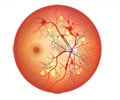Introduction to Teleophthalmology
Teleophthalmology is a branch of telemedicine that delivers eye care via a digital medical equipment and telecommunications network from a peripheral medical center to an advanced eye center.
Today, applications of Teleophthalmology encompass access to ophthalmologists for patients in remote areas for ophthalmic disease screening, diagnosis and monitoring; as well as distant learning. Teleophthalmology enables health professionals to capture eye images using a camera and transmitting them to an opthalmologist and helping patients in remote locations or clinics who have limited access to advanced eye hospitals . These images allow the ophthalmologist and other health care professionals and researchers, to carry out the diagnosis and suggest the right treatment.
The required equipment for Teleophthalmology includes a fundus camera that can take ocular images and a computer terminal with internet capabilities, which can transfer the images. There has been a significant increase in Teleophthalmology applications over the past decade.
The main challenges include the differences in health information exchange standards, data security, liability issues, and cost of equipment.
In India, there are nine ophthalmologists for every million people, as compared to the U.S., where there are 81 ophthalmologists for every million people. Moreover, in the coming years, 70 million people are likely to be affected by diabetes, of which one in every four people will have involvement of retina due to diabetes, where early diagnosis is important.
Diabetic clinics, general hospitals and diagnostic centers can have a set up with a non mydriatic Fundus camera, which captures an image of a patient’s retina at the point of contact.
Through a cloud-based device, the image gets transferred to the back-end team, which includes the ophthalmologist, who prepares reports and sends it back to the center. Once the center receives the report, the diabetologist advices the patient accordingly.
Patients who are detected with Retinopathy have the choice to go back to their own Ophthalmologists.
What is the process of Teleophthalmology?
Teleophthalmology services can be provided primarily in two ways synchronously or asynchronously:
- Synchronous Teleophthalmology enables real-time interaction between participants (using standard telemedicine technologies e.g. video-conferencing) for supervision, and for consultations.
- Asynchronous Teleophthalmology in a "store-and-forward" method, where data is captured and transmitted for review at a later time.
Images of the eye can be captured non-invasively through various methods, generally by a technician or non-physician health care professional.
- Anterior segment: slit lamp connected to a camera
- Posterior segment or retina: fundus camera
What are the Benefits of Teleophthalmology?
- Patients get all the treatment under one roof -- when they visit a general hospital or a Diabetes center. This is beneficial for them.
- Diabetes Center/ General Hospital offers this as a value add service to the patient. It has the potential to generate additional revenues for the hospital. Ophthalmologists in the area are benefitted as increased screening of patients leads to increased detection of Retinopathy which leads to increased patient flow.
- Patients from remote locations have the access to Ophthalmologists through video conferencing.
- Printed reports enable the patient to have documentation
- Patient education is possible when patients are able to see their own retinas and changes which has occurred due to Diabetic Retinopathy
Who Can Partner for Teleophthalmology?
- General Practitioners
- Diabetologists
- Nephrologists
- Neurologists
- Obstetricians
- Ophthalmologists
Wherever there is a requirement to check patients’ retina, but the area has no access to an Ophthalmologist, Teleophthalmology can be incorporated in the practice to provide more value to patients. Teleophthalmology need not be restricted only to larger institutions; it can definitely be used by small independent doctors too. It has the capacity to reach the unreached using relatively simple technology and to benefit the large majority of the patients, especially in the developing countries of the world.









